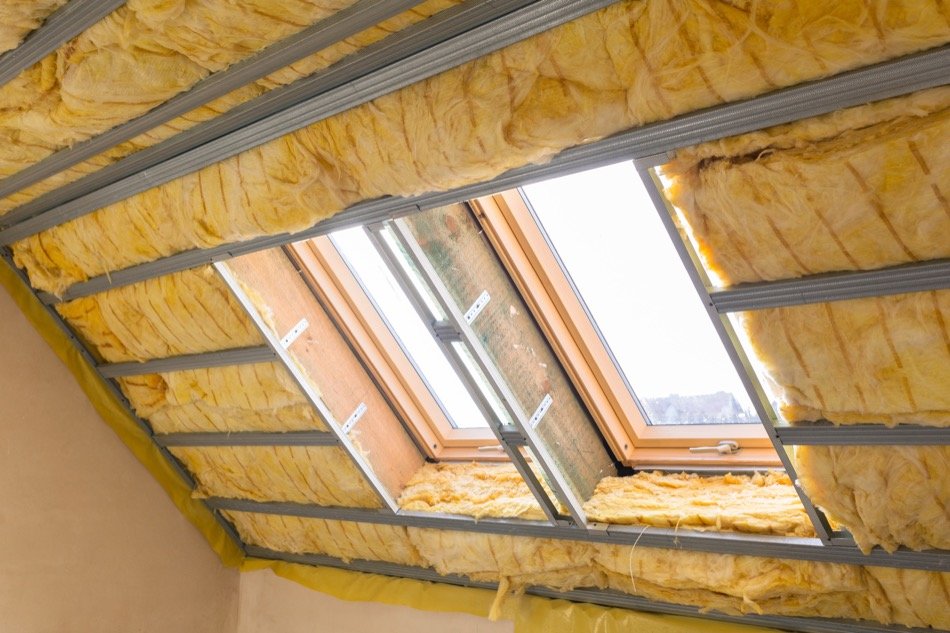5 Eco-Friendly Insulation Types For Your Green Home
Posted by Justin Havre on Friday, April 19th, 2019 at 8:52am.
 When people think about green homes, they typically think about smart devices like thermostats or double paned windows, but there’s many ways homeowners can make their home a bit more eco-friendly. These days, homeowners can even choose insulation for their home that is made from renewable materials or can be recycled in the future. Selling a home that is green often sell faster and for more money. Here are some of the different green insulation types homeowners can pick from.
When people think about green homes, they typically think about smart devices like thermostats or double paned windows, but there’s many ways homeowners can make their home a bit more eco-friendly. These days, homeowners can even choose insulation for their home that is made from renewable materials or can be recycled in the future. Selling a home that is green often sell faster and for more money. Here are some of the different green insulation types homeowners can pick from.
1. Wool Insulation
Some homeowners are familiar with wool as a green alternative for carpet, but it can also be used as insulation. Wool comes most commonly from sheep, llamas, alpacas, and a regular sheering helps keep them healthy and happy, so there isn’t any harm in taking it from them. When turned into insulation for a home, it can be purchased in batts and blankets, which are the easiest formats for homeowners to install on their own if they’re the DIY type. Wool is naturally flame retardant, but it can hold in moisture if it’s exposed to a leak, which can result in mold growth.
2. Cotton Insulation
Also called “denim” or “blue jeans” insulation, cotton insulation is made from 85% recycled material—a lot of which ends up being clothing like old jeans, hence the names. Like wool, cotton insulation comes in batts and blankets. Some insulation types such as fiberglass contain formaldehyde, a known carcinogen, and cotton insulation doesn’t contain any, making it both green and safer to be exposed to. If treated with boric acid, cotton insulation can become fire retardant like wool.
3. Aerogel Insulation
A type of insulation that many homeowners aren’t familiar with is called aerogel. It’s made from silica that has had all its liquid removed, leaving its mass made up of 90% air. Aerogel thermal insulation is a great insulator because its structure makes it difficult for heat to penetrate it. What makes aerogel a good insulation choice for a green home is that it’s 100% recyclable and is even made from 30% recycled materials. The biggest downside that aerogel has is its price: it costs up to $3 per foot, which unfortunately makes it unviable for many homeowners.
4. Cellulose Insulation
There’s no denying that there is a lot of paper going into landfills, but paper can only be recycled so many times before it can no longer be used, and this makes cellulose insulation a good final end for it. Cellulose insulation can be made from any type of paper, but newspapers tend to be the most common ingredient. For homeowners who are concerned with what sort of chemicals are being used in their home, cellulose can be a good option because it’s extremely safe to install and be around because it’s only paper.
5. Icynene Insulation
Icynene is unique on this list because it’s the only entry that is a spray foam: insulation that starts as a liquid until it makes contact with air and expands to fill a space. Icynene is made from castor oil, which is a type of vegetable oil that comes from castor beans, an easily renewable resource. In addition to insulating against heat and cold, Icynene also helps cancel noise, making it a good choice for homeowners who live in a noisy area. Icynene’s biggest downfall is that it’s expensive and needs to be professionally installed, but it does its job well.
Some of these insulation types may be difficult to find due to how they haven’t quite made it to the mainstream yet, but they’re worth looking for for homeowners who truly want their Glenbow new home to be more eco-friendly.
